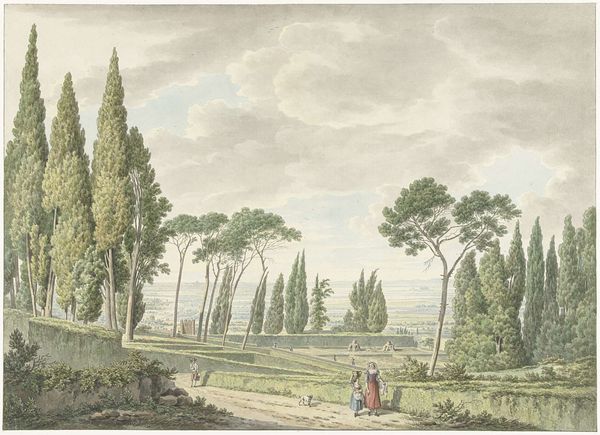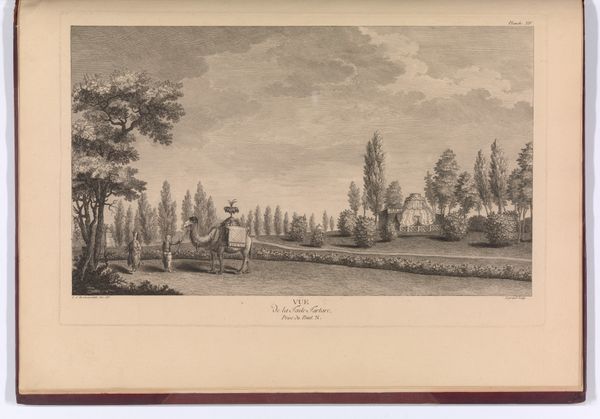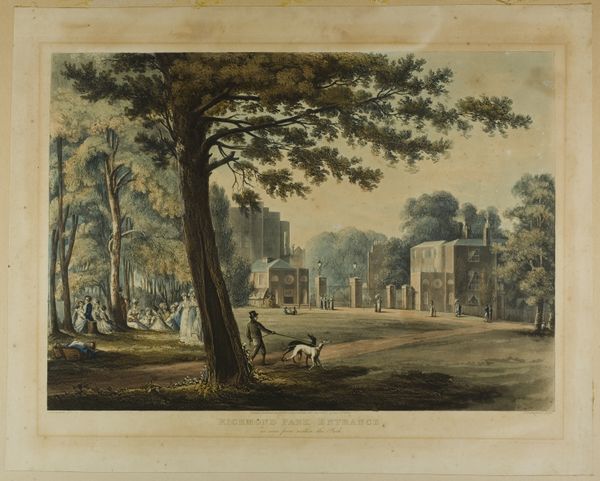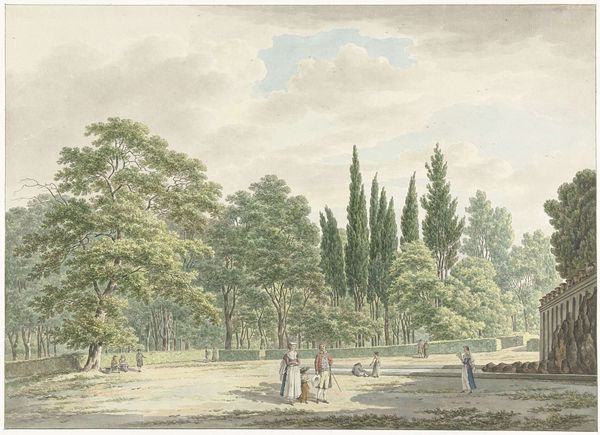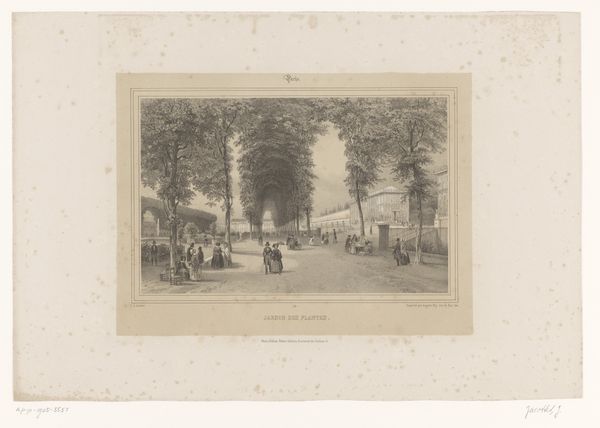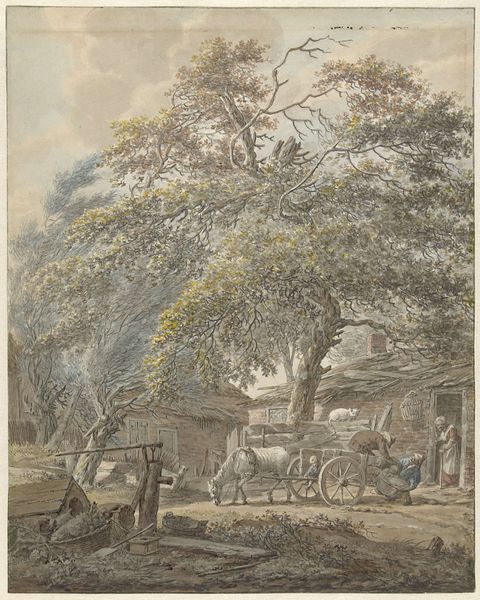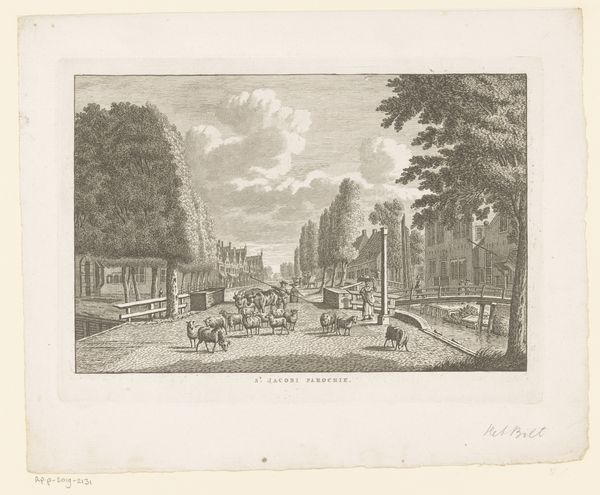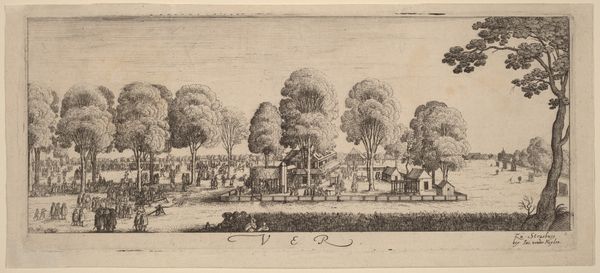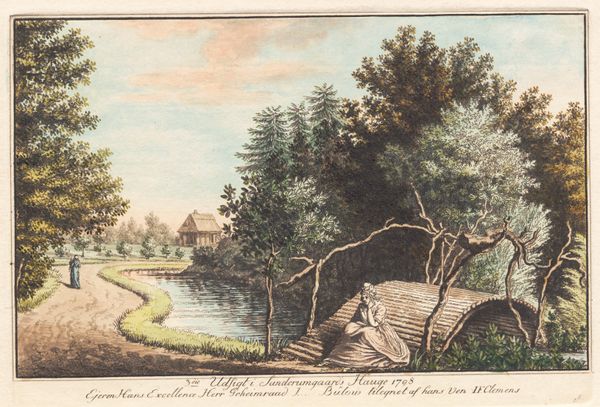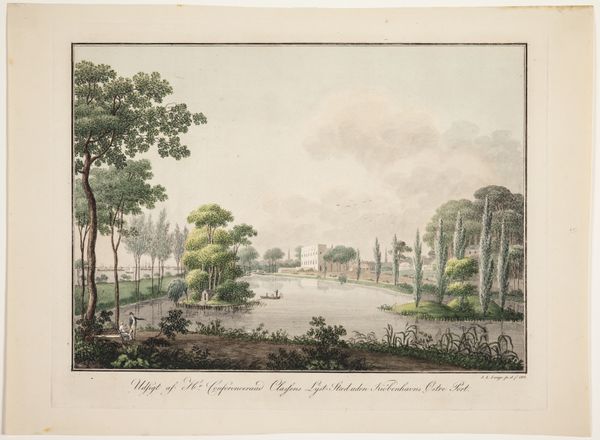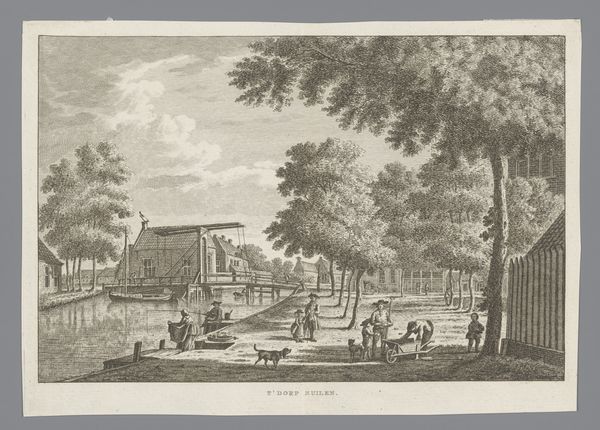
drawing, painting, print, watercolor
#
tree
#
landscape illustration sketch
#
drawing
#
neoclacissism
#
painting
# print
#
landscape
#
watercolor
#
botanical drawing
#
men
#
cityscape
#
watercolour illustration
#
academic-art
#
natural palette
#
botanical art
#
building
Dimensions: Mat: 23 1/4 × 32 3/16 in. (59 × 81.8 cm) Image: 20 1/4 × 29 5/16 in. (51.4 × 74.4 cm)
Copyright: Public Domain
Editor: Here we have Giovanni Volpato’s "Villa Montalto Negroni," made with watercolor sometime between 1775 and 1785. It has such a serene and orderly feel. What do you see in this piece? Curator: This is more than just a landscape. The Villa Montalto Negroni, rendered during the height of Neoclassicism, embodies the Enlightenment’s aspirations for order, reason, and a return to classical ideals. But look closer, consider whose ideals? Who has access to this space, this “nature?” The architecture and sculpted gardens aren't just beautiful; they represent power structures made visible, carefully curated for the elite. Editor: So, the very structure of the landscape is saying something? Curator: Exactly. How might we consider this through a feminist lens? Or a postcolonial one? The manicured space speaks volumes about control, privilege, and the imposition of a particular vision on the natural world – one divorced from labor and the realities of those who maintain it. Volpato isn't simply depicting a scene; he's subtly revealing the social and political hierarchies of his time. Notice how the figures are positioned—almost as adornments themselves within this constructed paradise. What does their presence tell us about access and belonging? Editor: That’s really changed my view. It's no longer just a pretty picture of a villa. Curator: Precisely! By questioning whose perspective is being centered and whose is being marginalized, we gain a far richer understanding. Editor: Thanks, I will never look at landscapes the same way again. Curator: And that’s the power of art – it reflects the past but challenges us to reconsider the present.
Comments
No comments
Be the first to comment and join the conversation on the ultimate creative platform.


